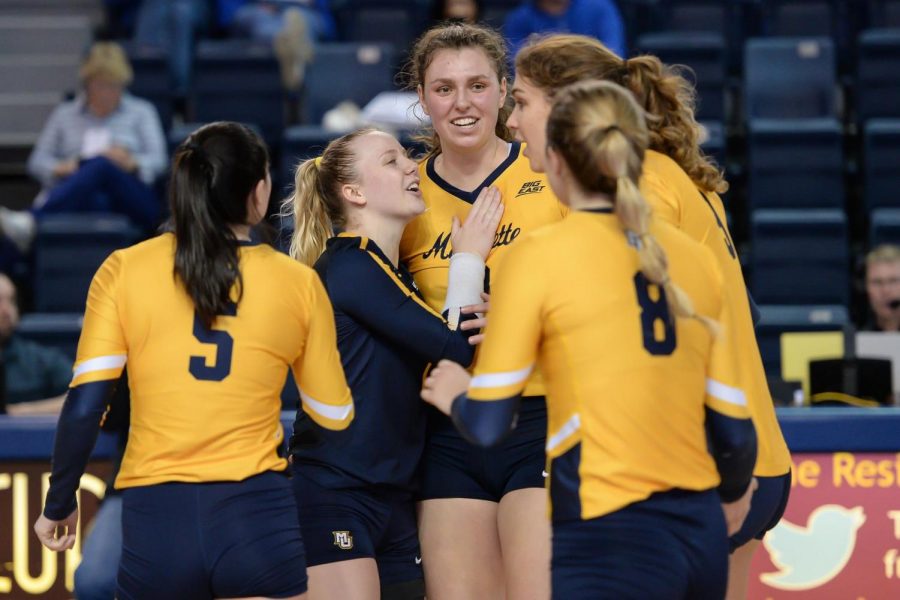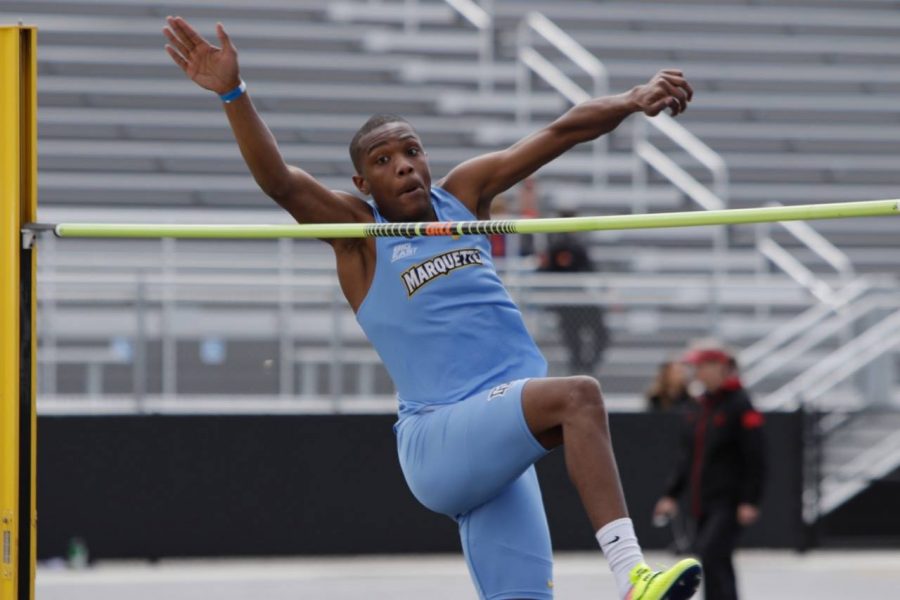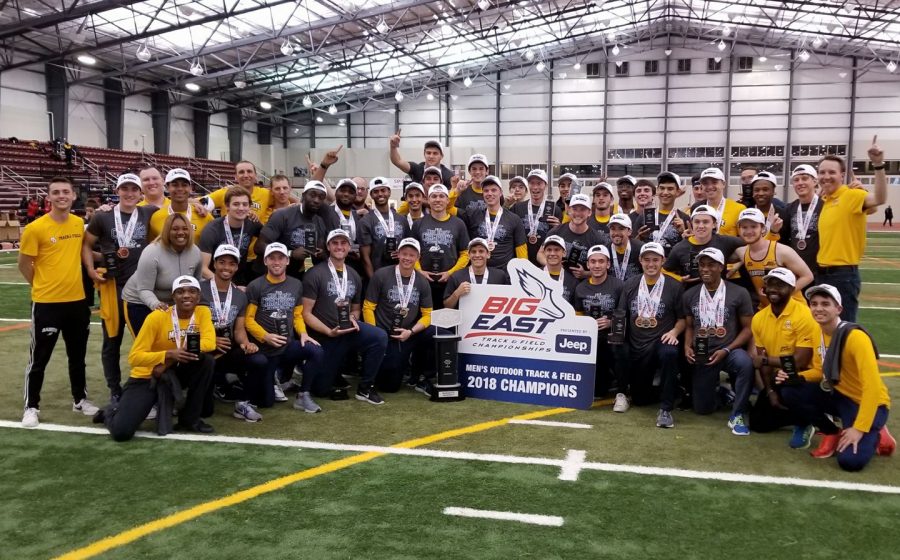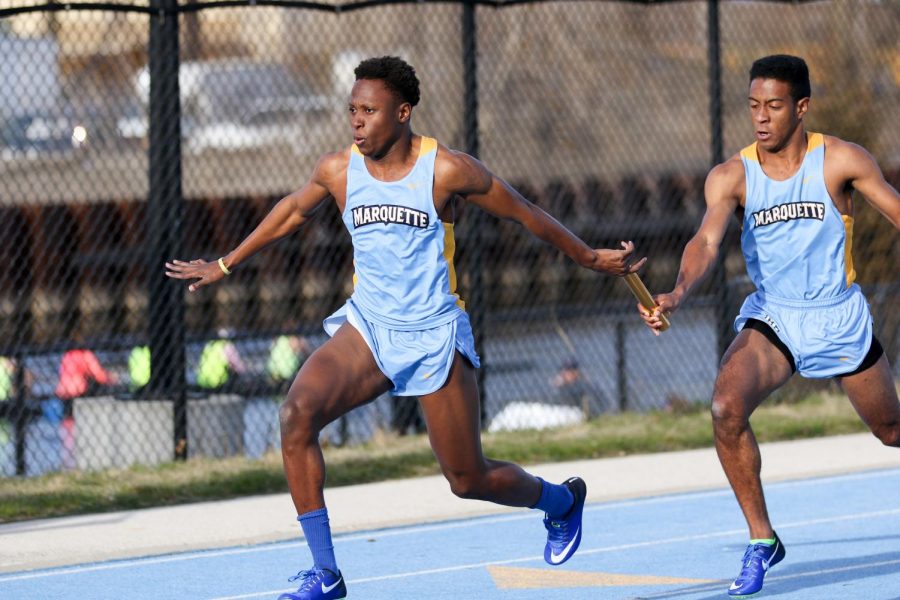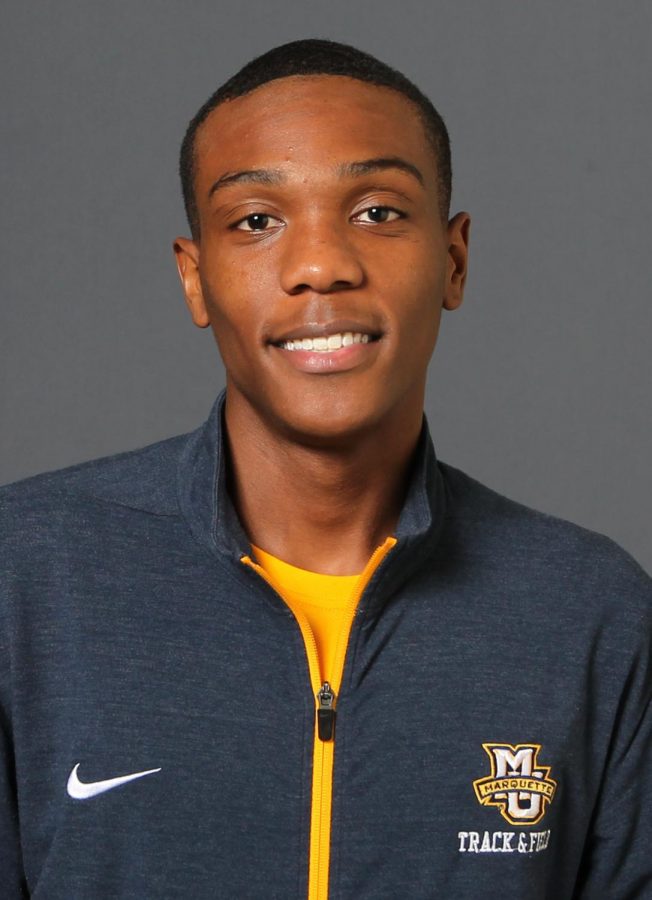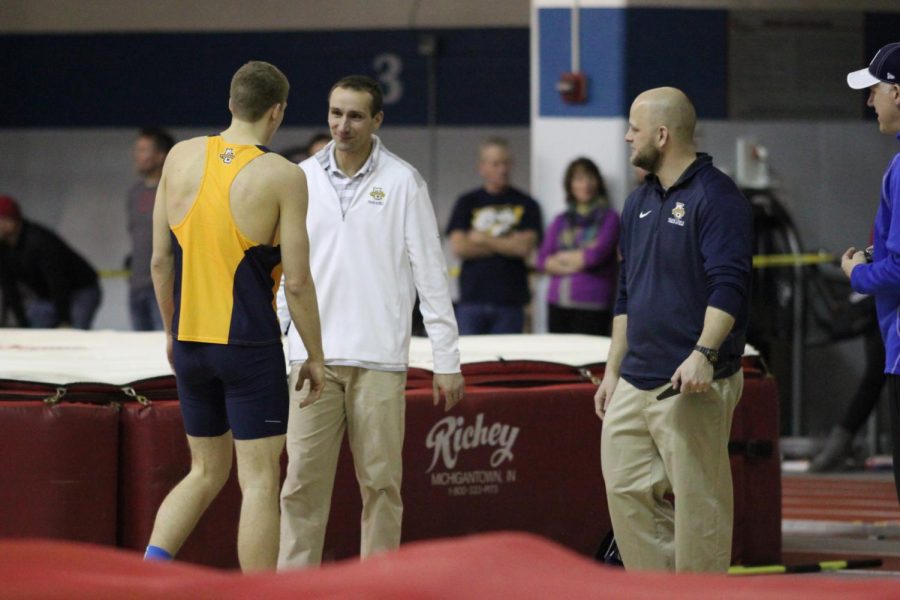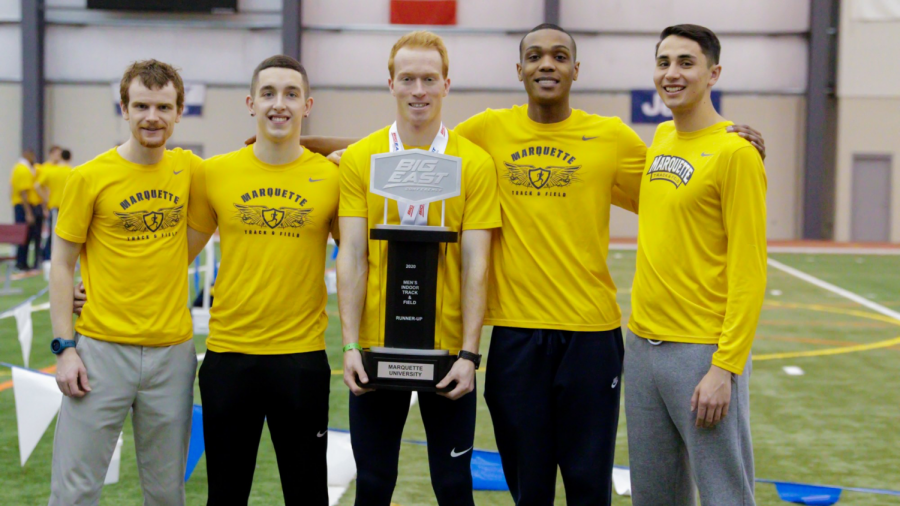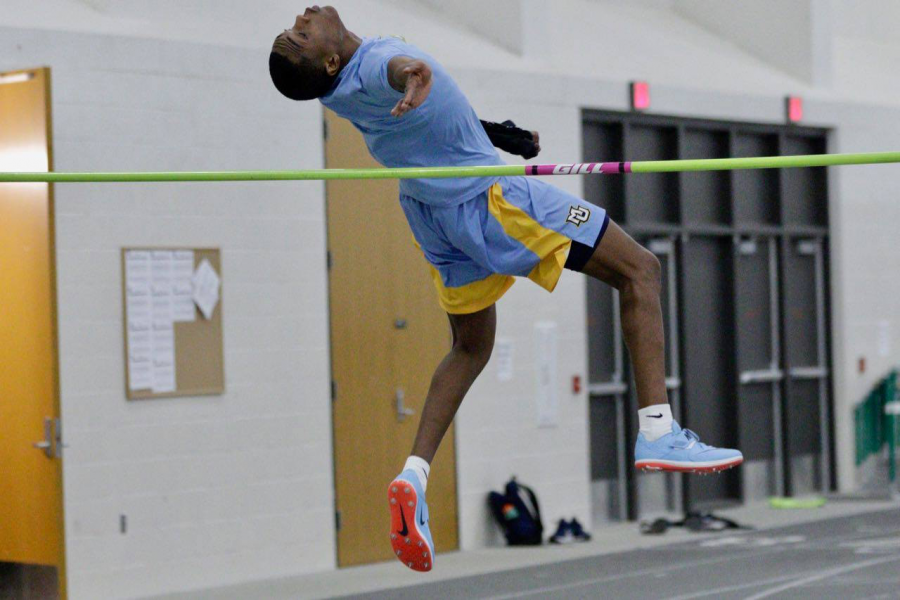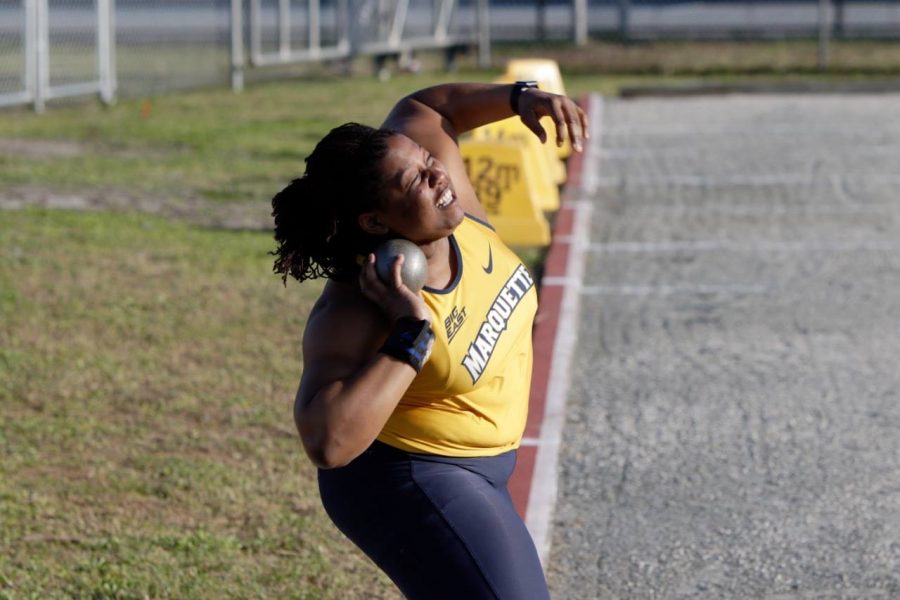Sophomore high jumper Daniel Armstrong has one goal heading into the rest of the season: Topple Wally Ellenson’s high jump record.
“I am going to take his record down,” Armstrong said. “That’s all I’m going to say.”
Armstrong will have a chance to accomplish that this weekend with the NCAA Indoor Championships as the first Marquette track and field to compete at the national meet since Ellenson in 2015.
“It would piss me off when I went to this meet and an official was like, ‘Oh, you had this really good jumper, what happened to him?'” Armstrong said.
Ellenson’s 2.28-meter high jump record is not out of Armstrong’s reach going into this weekend. Armstrong will be competing this weekend in College Station, Texas after he won the BIG EAST with a mark of 2.20 meters. However, even after a stellar BIG EAST performance, he was not a lock for the NCAA Championships.
The qualifying process for Armstrong was a two-day ordeal as the NCAA Indoor Championships committee tried to figure out who would take the final spot. Armstrong held the tiebreaker because he reached the mark in fewer jumps.
“It was stressful not knowing if you were going to make it,” Armstrong said. “Knowing you gave it all you could, I would have been upset if I hadn’t gotten it, but I knew that I gave it my all.”
High jump coach Rick Bellford, a former All-American jumper at the University of Wisconsin-Madison, said there’s no telling what Armstrong could do at Texas A&M. “Just getting him in a field with 15 other elite jumpers is really going to bring out the best in him,” Bellford said.
Armstrong has won all but one meet, in which he took second. Bellford noticed that talent and competitive spirit since he first started recruiting Armstrong in high school.
“He’s always had (a competitive drive), but I think he’s realizing how good he could be,” Bellford said. “He’s always had that killer instinct and that’s what really enables him to train and compete so well.”
When Armstrong first reached out to big-name programs, including several Big Ten schools. Bellford and Marquette were the only ones to respond. Once Armstrong cleared a seven-foot bar, the bigger programs finally took an interest, but it was too late. Armstrong stayed committed to Marquette.
“Watching his film and the way he was clearing those bars, it was like, ‘Oh my gosh, this kid is going to be unbelievable,’” Bellford said. “After his visit, I told coach (Bert) Rogers, ‘We have to get this kid — he’s going to be the next great one.’”
Bellford has helped Armstrong take the next step in his development. As a result of a flaw in Armstrong’s approach, Bellford had to shorten it to eight steps instead of the usual 10, allowing Armstrong to focus on mechanics. After re-working it this year, Armstrong expanded his approach to the full 10.
Even though Armstrong qualified for the meet, an achievement in its own right, he’s not satisfied. The fact that the other jumpers were ranked ahead of him is still a sticking point.
“Actually being able to make it to the top 16, and now being at the bottom of the list and seeing that there are 16 guys out there that are better than me — I don’t like losing,” Armstrong said.
Going into this weekend, the same competitive spirit that got Armstrong to Marquette and drove him to fix the inefficiencies in his jump will be on full display.
“He’s going to stick his nose in there and jump lights out,” Bellford said. “The way that he competes, he prides it (sic) at these bigger meets, and I think it’s going to bring out the best in him.”



